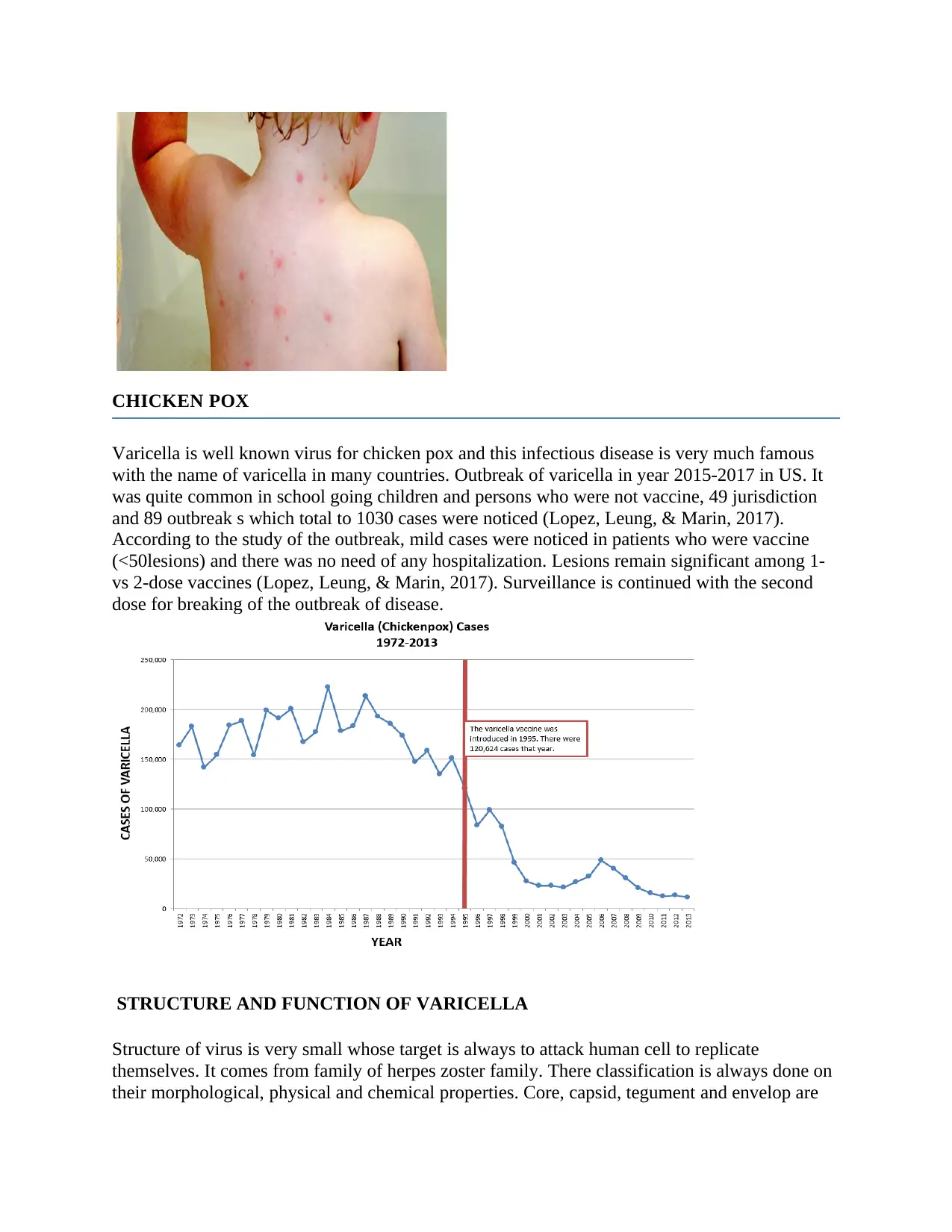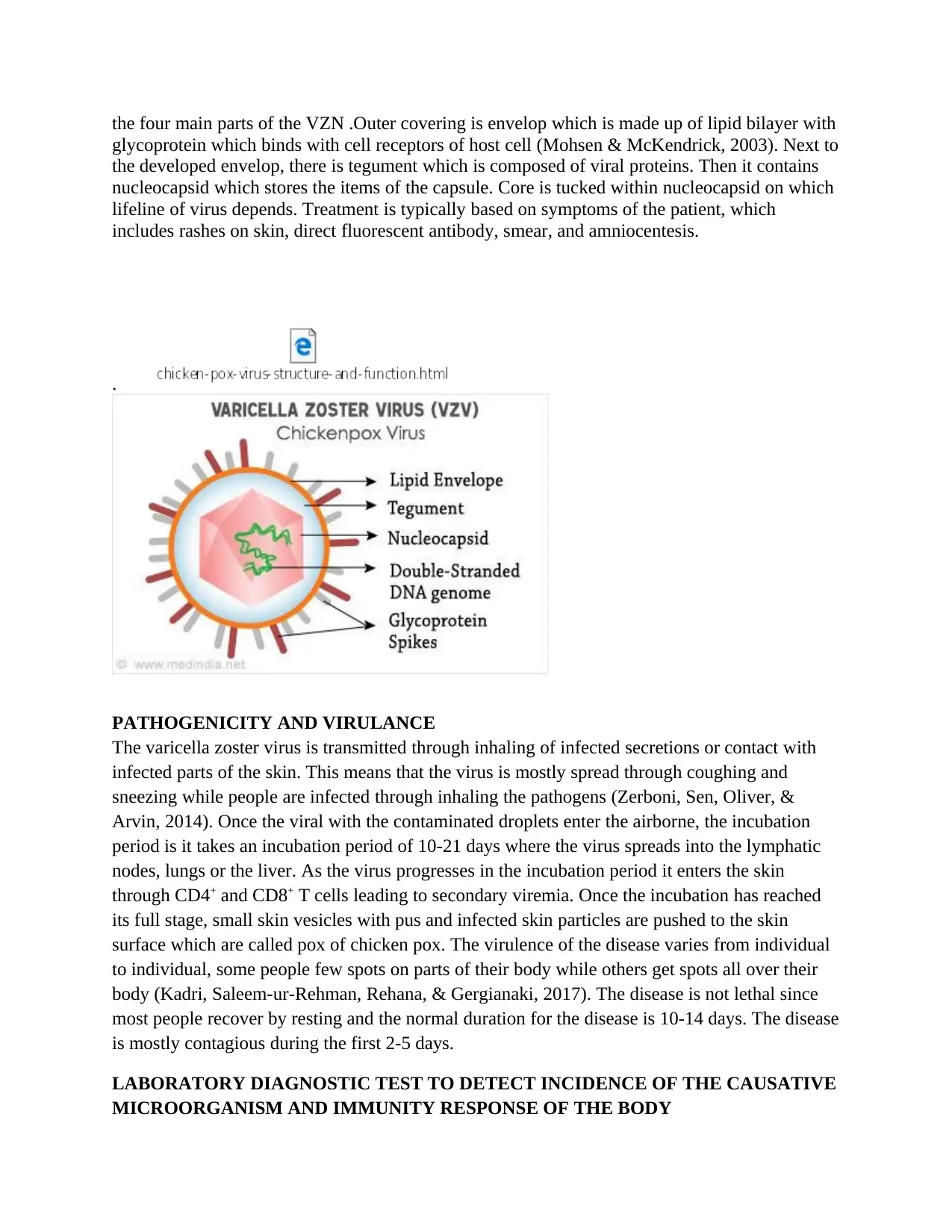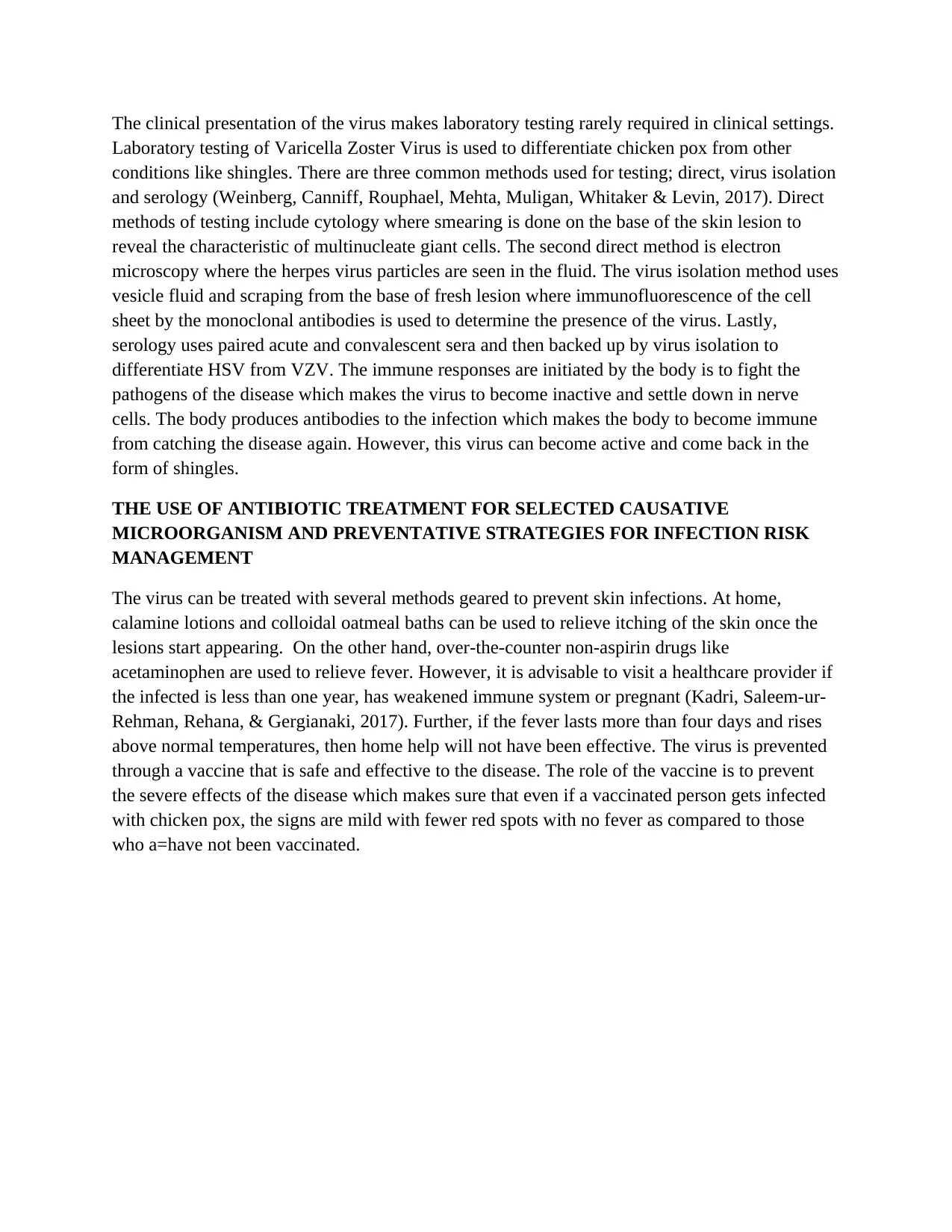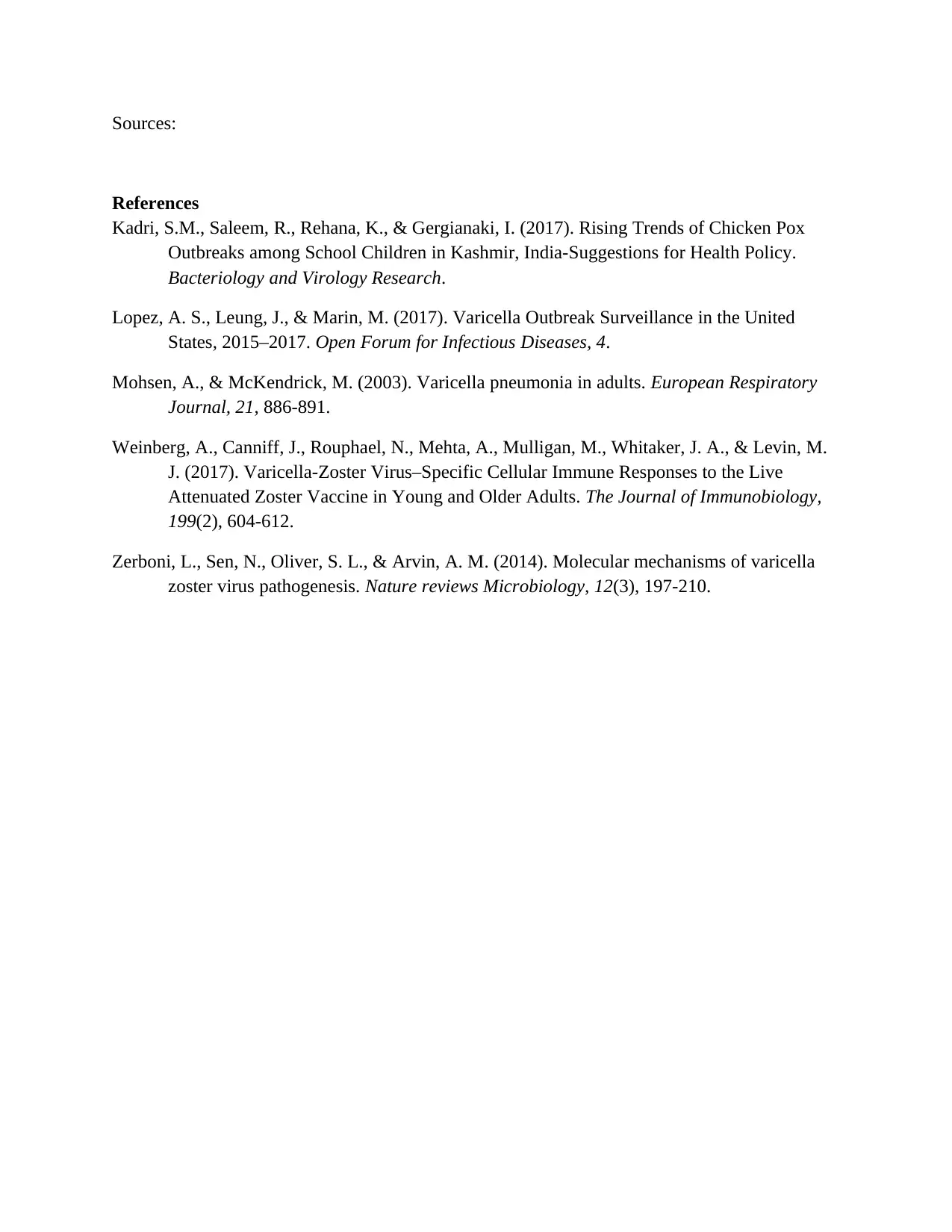Chicken Pox: Varicella Virus Report - Public Health, Semester 1
VerifiedAdded on 2023/06/03
|4
|1176
|103
Report
AI Summary
This report provides a comprehensive overview of Chicken Pox (Varicella), a well-known viral infection. It begins with an introduction to the virus, including its outbreaks in the US from 2015-2017, particularly among unvaccinated individuals and school-going children. The report then delves into the structure and function of the Varicella Zoster Virus (VZV), detailing its components like the core, capsid, tegument, and envelope, and their roles in viral replication. The report also discusses the virus's pathogenicity and virulence, explaining its transmission through airborne droplets, incubation period, and the development of skin vesicles. Furthermore, it outlines laboratory diagnostic tests, including direct methods, virus isolation, and serology, used to detect the virus and assess the body's immune response. The report also covers the use of antibiotic treatment and preventative strategies, such as calamine lotion, over-the-counter medications, and the importance of vaccination in preventing severe disease. The report is supported by several references to credible sources.
1 out of 4







![[object Object]](/_next/static/media/star-bottom.7253800d.svg)